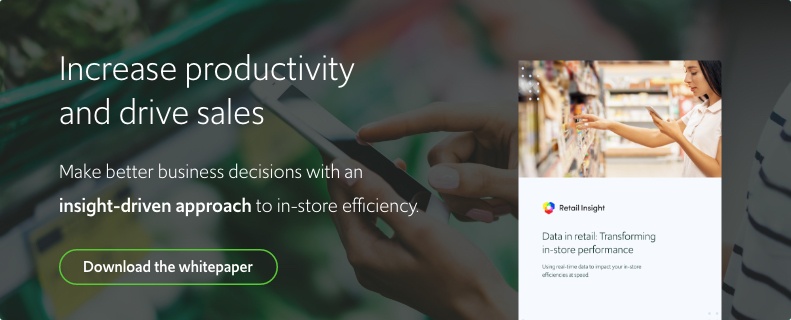What can grocery retailers do to help their customers manage inflation rates?

- 3 minute read
- Irene Brockie
In June 2022, inflation peaked at 9.1% in the US, with the annual rate for the year sitting at 6.5%1. The impact of this is that millions of US consumers are facing significant financial pressures and struggling to cover costs amidst staggering price hikes.
Non-discretionary categories such as food and fuel are more resistant to the effects of economic volatility than their discretionary counterparts. The basic human need to heat and eat in order to survive means they are more likely to cut expenditure in discretionary areas such as leisure, travel, and entertainment rather than on their weekly grocery shop.
However, the reality is more complex. Consumers are cutting back on premium and luxury items and switching to lower-cost, private-label products2, a dual effect which is having a significant impact on retailer sales. We also see shopper migration, as consumers with ample choice of supermarket will look to switch to cheaper alternatives than their usual grocery store in search of the best price possible.
What can grocery retailers do to retain shoppers, drive growth and elevate key messaging around customer and community care?
This is where Retail Insight can help.
Against a backdrop of economic uncertainty and crippling inflationary pressures, shopper retention is crucial to success in retail. Through an approach that enables the maximisation of every sale and a significant reduction in food wastage, retailers can support shoppers (offering value-for-money and multi-tiered product choice at a storewide level) whilst lessening the impact of inflation on profit margins. Enabling each store to reach its full potential is key to unlocking long-term growth.
Grocery retailers have an awful lot to lose by failing to deal with out-of-stock products – lost sales could lead to 8% of total revenue being missed by grocers, alongside labour inefficiencies and poor customer satisfaction. At a global level, 31% of consumers say that they buy unavailable items at another store in response to out of stocks3, causing significant levels of shopper migration. There are numerous tangible benefits to adopting solutions such as AvailabilityInsight.
What’s less quantifiable is the impact that out-of-stocks have on shoppers – the true cost of product shortages and empty shelves to retail customers, more and more of whom are currently struggling to survive on tighter budgets than ever before.
For example, if a customer visits their preferred grocery retailer and discovers that eight of the 30 items on their shopping list are out of stock, and this necessitates a significantly higher overall spend due to more expensive substitute items being purchased instead - that customer is likely to think twice before making a return journey.
Meanwhile, our WasteInsight solution is not only used by grocers to help sell more and waste less – it is a food waste management tool that enables food to reach more shoppers4, driving affordability and access to fresh food options that many shoppers would be unable to ordinarily budget for.
Selling fresh food products that would otherwise end up in landfill (199 billion pounds of food are estimated to be wasted per year in the US)5 at smartly discounted prices not only drives profitability at a retailer level, it also pushes a narrative of catering to shoppers of all economic means and offering value-for-money on a wider scale. This is still good produce with only slightly less life – a small incentive to buy makes a huge difference in diverting from landfill.
In these unprecedented and undoubtedly challenging times, grocery retailers that display agility – an understanding and willingness to act quickly to make significant operational changes and investments with a view to securing long-term growth – are most likely to succeed.
1 U.S. Bureau of Labor Statistics.
2 Forbes.
3 Corsten, D. and Gruen, T. (2003), "Desperately seeking shelf availability: an examination of the extent, the causes, and the efforts to address retail out‐of‐stocks", International Journal of Retail & Distribution Management, Vol. 31 No. 12, pp. 605-617.
4 Retail Insight.
5 Feeding America.
Get in touch
Written by Irene Brockie
Irene is the Research Associate at Retail Insight, having joined the business from Mintel, where she specialised in creating insightful and in-depth content about retail industry issues and trends. She is originally from Ireland and holds a degree in English Literature and German from Trinity College, Dublin.
